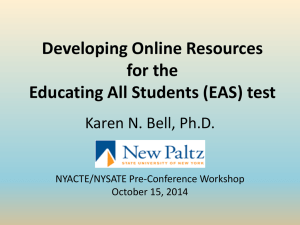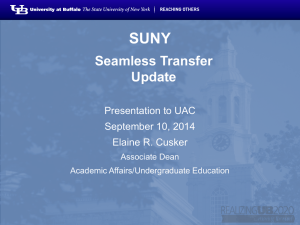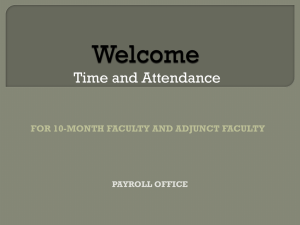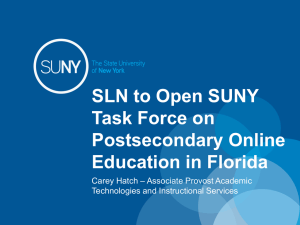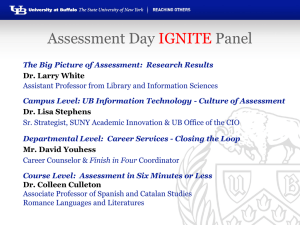Lesson 8- Part 2- SUNY scavenger hunt
advertisement
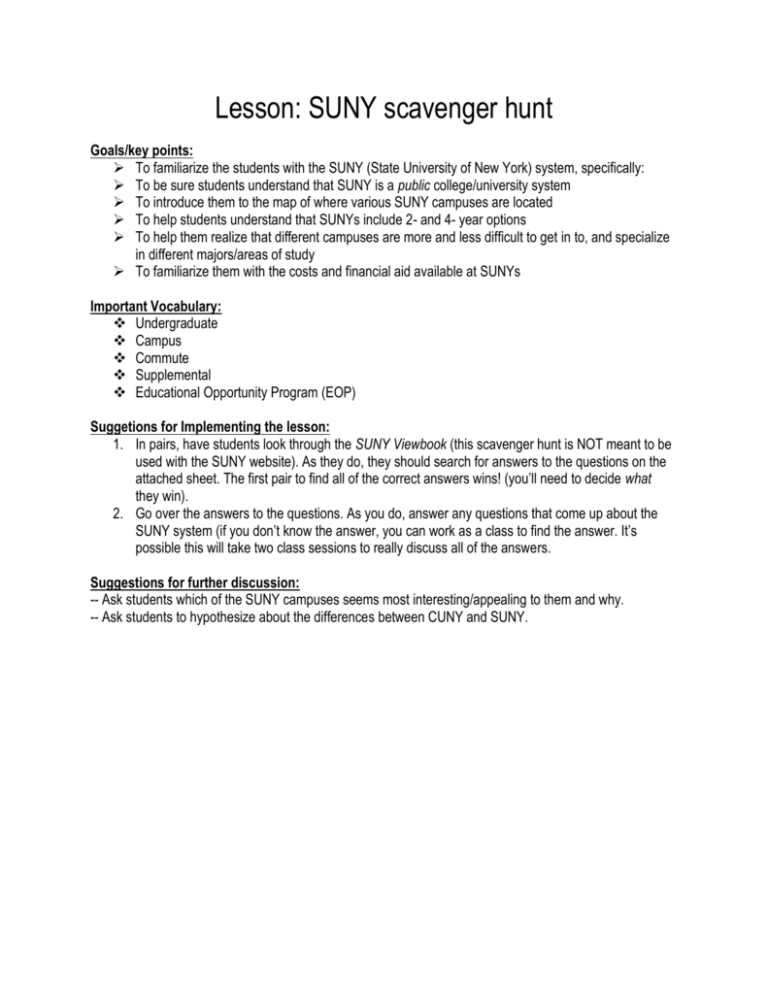
Lesson: SUNY scavenger hunt Goals/key points: To familiarize the students with the SUNY (State University of New York) system, specifically: To be sure students understand that SUNY is a public college/university system To introduce them to the map of where various SUNY campuses are located To help students understand that SUNYs include 2- and 4- year options To help them realize that different campuses are more and less difficult to get in to, and specialize in different majors/areas of study To familiarize them with the costs and financial aid available at SUNYs Important Vocabulary: Undergraduate Campus Commute Supplemental Educational Opportunity Program (EOP) Suggetions for Implementing the lesson: 1. In pairs, have students look through the SUNY Viewbook (this scavenger hunt is NOT meant to be used with the SUNY website). As they do, they should search for answers to the questions on the attached sheet. The first pair to find all of the correct answers wins! (you’ll need to decide what they win). 2. Go over the answers to the questions. As you do, answer any questions that come up about the SUNY system (if you don’t know the answer, you can work as a class to find the answer. It’s possible this will take two class sessions to really discuss all of the answers. Suggestions for further discussion: -- Ask students which of the SUNY campuses seems most interesting/appealing to them and why. -- Ask students to hypothesize about the differences between CUNY and SUNY. SUNY scavenger hunt 1. What does SUNY stand for? 2. How many different SUNY colleges are there? 3. What are the different kinds of SUNY colleges? List them below with a one sentence description of what students can do at this type of college. 4. Name three SUNY colleges on Long Island. 5. Name two SUNY colleges that are less than 3 hours north of New York City. 6. Name one community college SUNY within NYC. 7. Name the SUNY university college that is farthest from NYC. 8. Which SUNY campuses do NOT require a supplemental application? 9. What are the most popular majors at Old Westbury? 10. What are the most popular majors at New Paltz? 11. What is the total typical cost of studying for a bachelor’s degree at a SUNY college if you live on campus? 12. What is the total typical cost of studying for a bachelor’s degree at a SUNY college if you commute (i.e. do not live on campus)? 13. What is EOP and what are the requirements to be eligible to apply for it? 14. Of the university colleges, which has the largest number of undergraduate students? 15. Of the university colleges, which two have the smallest number of students? SUNY scavenger hunt ANSWERS FOR 2011 VIEWBOOK 1. What does SUNY stand for? State University of New York 2. How many different SUNY colleges are there? 64 3. What are the different kinds of SUNY colleges? List them below with a one sentence description of what students can do at this type of college. 1. University Centers and doctoral granting institutions 2. University Colleges: grant undergraduate and masters degrees 3. Technology Colleges: grant certificates, associate, bachelor’s and masters; students “learn by doing” 4. Community Colleges: grant associate’s degrees 4. Name three SUNY colleges on Long Island. Possibilities: Farmingdale CC, Suffolk CC, Old Westbury, Stonybrook, Nassau CC 5. Name two SUNY colleges that are less than 3 hours north of New York City. Possibilities: Purchase, Westchester CC, Rockland CC, Dutchess CC, New Paltz, Orange Countu CC, Sullivan County CC, Albany, Oneonta 6. Name one community college SUNY within NYC. FIT 7. Name the SUNY university college that is farthest from NYC. Possibilities: Buffalo State, Potsdam, Plattsburg 8. Which SUNY campuses do NOT require a supplemental application? Albany, Old Westbury, Cobleskill, Farmingdale, SUNY IT, all community colleges except for FIT 9. What are the most popular majors at Old Westbury? Psychology, accounting, biology, education, business, media & Communications 10. What are the most popular majors at New Paltz? Medical program, Elementary & secondary education, visual arts, business, psychology, English, sociology, biology, communication disorders, history 11. What is the total typical cost of studying for a bachelor’s degree at a SUNY college if you live on campus? See pg. 50: $20,050 12. What is the total typical cost of studying for a bachelor’s degree at a SUNY college if you commute (i.e. do not live on campus)? See pg. 50: $13,990 13. What is EOP and what are the requirements to be eligible to apply for it? See pg. 51 14. Of the university colleges, which has the largest number of undergraduate students? Empire State 15. Of the university colleges, which two have the smallest number of students? Old Westbury, Potsdam
